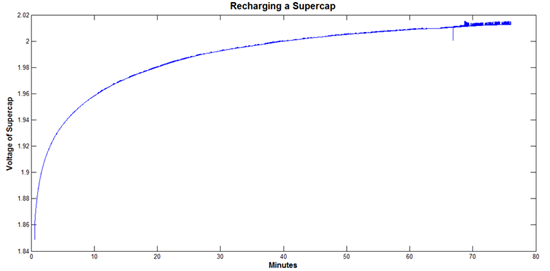Hello all,
I am simply trying to charge a 3V Super Capacitor from 1V up to 3V, and I am trying to figure out the most efficient way to do this using the BQ25504 EVM.
My input power right now is approximately 0.011 mW, which is quite low. (Input voltage ~0.345 V) The power pulses like a square wave every 6 seconds, with a 50% duty cycle. There is no load.
I have just a few questions:
1) Will this input power be enough to charge the super capacitor?
2) Right now, I assume that I must connect the supercap to VBAT, and VSTOR is open on the EVM. Is this the correct circuitry, or is there something else I must do?
3) Would it be more efficient to start the supercap at ~1.8 V (Vstor_chgen) and start charging from there up to 3V, or does it not matter?
Thank you, I'm open to any and all suggestions for improved efficiency.
Brock


